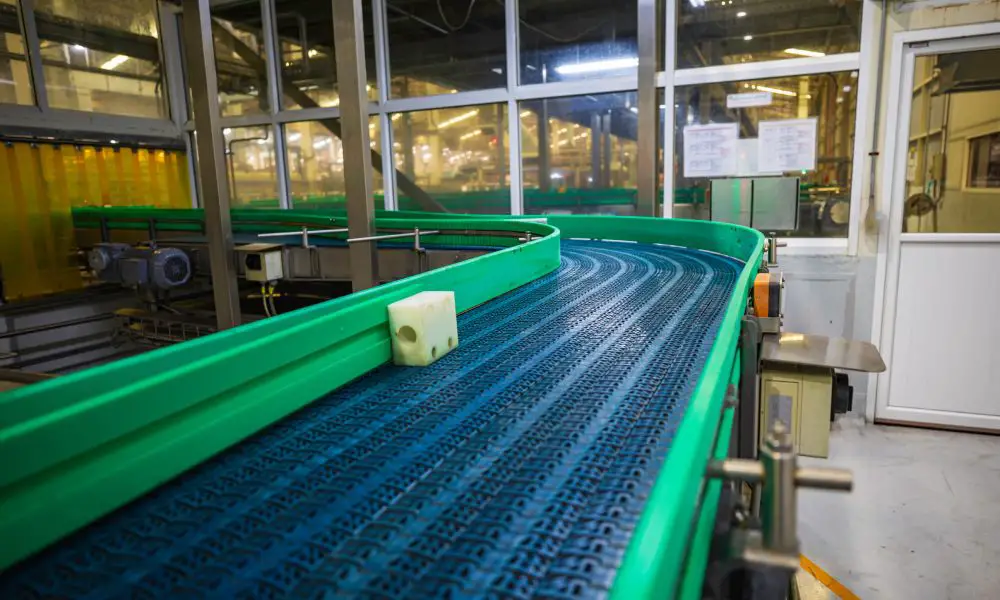

Conveyor belts are staples in manufacturing facilities far and wide. Given their importance and industrial application, it only makes sense that plastic would play a role. Plastic components are the unsung heroes that make conveyor belts work seamlessly. Learn more below.
Polyvinyl chloride (PVC) is one of the most common materials for conveyor belts. Durable and flexible, these belts offer a unique combination of strength, versatility, and cost-efficiency, making them a popular choice for both light and heavy-duty applications. PVC belts are resistant to chemicals, abrasion, and moisture, thereby extending conveyor belt life under harsh conditions. The smooth surface of PVC also provides excellent grip for transporting goods.
Plastic wear strips, usually made from polyethylene, reduce friction between the conveyor belt and the conveyor frame. This prolongs the life of the belt itself and contributes to smoother operations, preventing jams and helping products move steadily along the belt. Plus, the low friction coefficient of plastic wear strips means conveyor systems require less power to operate, translating to lower energy costs.
UHMW guide rails are integral to maintaining the correct path of both the conveyor belt and the products it transports. These rails prevent product slippage, ensuring efficient handling and minimizing the risk of damage to goods. This is particularly important in industries dealing with fragile items.
Plastic sprockets, usually but not always made from UHMW or nylon, are commonplace in modular plastic belts. These sprockets engage with the belt itself, driving it forward. Though plastic sprockets may not be as durable as metal ones, they exert less wear and tear on the belt, contributing to a longer belt lifespan. This leads to a system that operates more quietly and requires less maintenance over its lifespan.
Did you realize that plastic components are often what make conveyor belts work efficiently and reliably? From belts and wear strips and guide rails to sprockets, these plastic elements ensure that conveyor systems fulfill their role in modern industrial operations. Their contribution to reducing maintenance needs, energy consumption, and product damage is essential in the smooth functioning of conveyor belts.
Galveston, Texas, is quickly emerging as a premier destination for deep-sea fishing enthusiasts in search…
In the ever-evolving landscape of construction and building maintenance, sustainability has emerged as a crucial…
Minnesota, celebrated for its picturesque rural landscapes and vibrant urban centers such as St. Paul…
In the realm of kitchen renovations, cabinetry plays a pivotal role in shaping both the…
In the field of driving regulations, one of the most critical areas of focus is…
Minnesota's harsh winters and humid summers significantly affect residential roofing durability. Homeowners should regularly inspect…